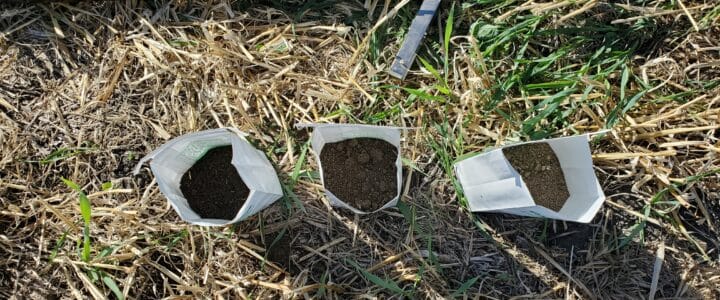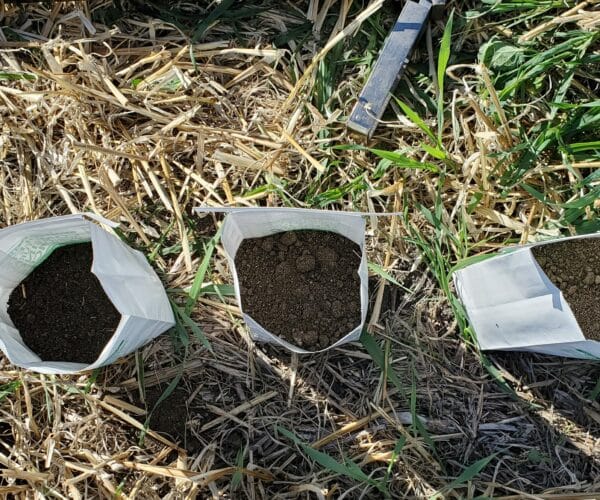Optimizing nutrient management for the environmental conditions remains an important consideration to farmers every season. New research and formulations can offer additional information and options, but many of these still build on the longstanding 4R nutrient stewardship concepts have been shared for decades by the International Plant Nutrition Institute (IPNI) and other research-based organizations. This blog highlights ongoing nutrient management studies and reviews nitrogen and phosphorus-focused fertilizer source, placement, timing and rate research and the evidence-based recommendations that they provide.
IHARF nutrient management trials
Focusing on their mission to ‘promote profitable and sustainable agriculture by facilitating research and technology transfer activities for the benefit of its members and the agricultural community at large’, the non-profit Indian Head Agricultural Research Foundation (IHARF) conducted a series of 4R-related nitrogen and phosphorus field studies between 2016-2021, which are summarized below.
IHARF works closely with Agriculture and Agri-Food Canada at the Indian Head Research Farm and carried out these trials near Indian Head, Saskatchewan in the thin-Black soil which is classified as an Indian Head clay with typical organic matter concentrations of 4.5-5.5%.
Nitrogen was emphasized because it is the most commonly limiting nutrient in annual crop production and often accounts for one of the most expensive crop nutrients, particularly for crops with high nitrogen requirements like wheat and canola. Phosphorus is the second most commonly limiting nutrient throughout Saskatchewan and, in many cases, residual phosphorus levels are declining over the long-term as a result of continuous cropping, recent high yields and inadequate application rates.
Apply this research on your farm
- Banding nitrogen at seeding remains the least risky and most efficient application method.
- Soil testing is advised to account for the inherent fertility of the soil.
- Check out the recently-posted Manitoba on-farm research results – including nitrogen rate trials.
- Side-banding all or most phosphorus fertilizer was best in Saskatchewan trials, especially with higher rates.
- Current research is revisiting crop nutrient uptake and removal guidelines for Western Canada.
Nitrogen source and rate demonstrations
The 2016-2017 Demonstrating 4R nitrogen principles in canola IHARF project examined canola’s response to varying rates of nitrogen fertilizer along with different combinations of formulations (sources), timing and placement methods relative to the side-banded, untreated urea control. Treatments encompassed all four considerations (source, rate, time and place) for 4R nutrient management (while recognizing that these factors are not necessarily independent of each other). The growing season was dry (less than half the long-term average precipitation), however initial soil moisture and overall yield potential of the canola was still high.
Results and conclusions from this Indian Head site in the 2017 growing season included:

- Nitrogen had a strong impact on yield, with yields increasing sharply from the 0-1.0x rates and then tapering off between the 1.0-1.5x rates (145-200 kg/ha soil plus fertilizer nitrogen). See Figure 1 below for details.
- Side-banded urea at seeding produced the highest yields, followed by the split application with Agrotain®, which supports banding as the least risky and most efficient nitrogen application method, though results can vary due to weather conditions.
- Previous research supports early in-soil applications in dry years, while nitrogen fertilizer placement and application timing are less critical under optimal conditions.
- In wet years, environmental losses can be high regardless of application method depending on the source, so denitrification inhibitors or split-applications are likely to be most beneficial.
- While only some split-application treatments were significantly greater than pre-seed surface applied treatments (with no significant differences between the two methods averaged across all treatments), the split-application method does offer the flexibility to adjust nitrogen rates during the season for the year-to-year variability of crop and moisture conditions (especially when nitrogen is placed beneath the soil surface).
- In extremely dry springs, which can be a challenge for Saskatchewan growers, rates can be adjusted down according to yield potential.
- In very wet fields or years when the potential for losses is high if nitrogen is applied too far ahead of uptake, split applications can also be beneficial. Precipitation is usually adequate to move top-dressed nitrogen into the rooting zone where it can be utilized by the crop.
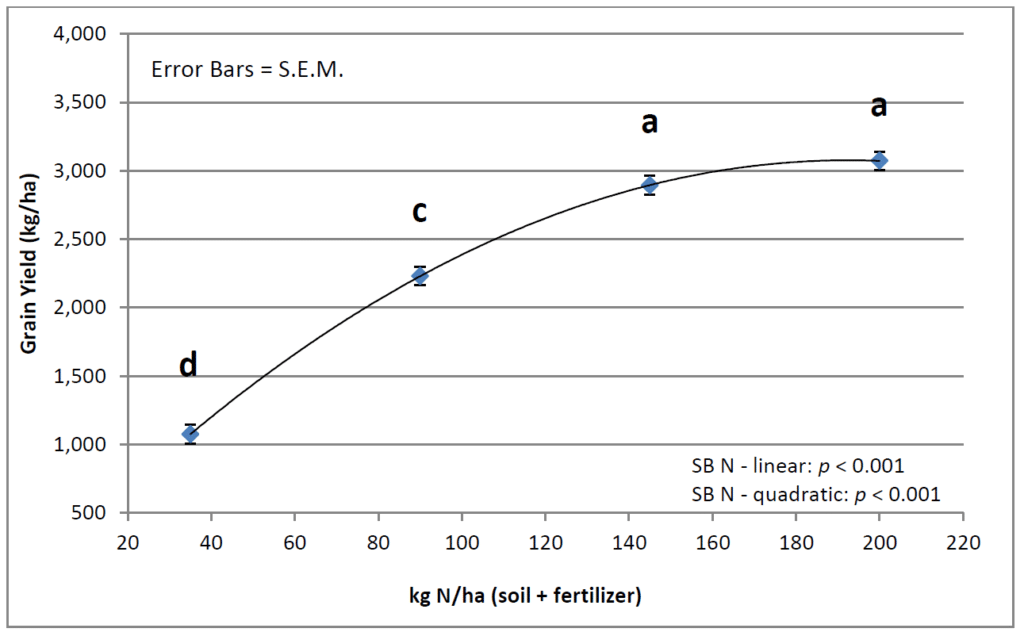
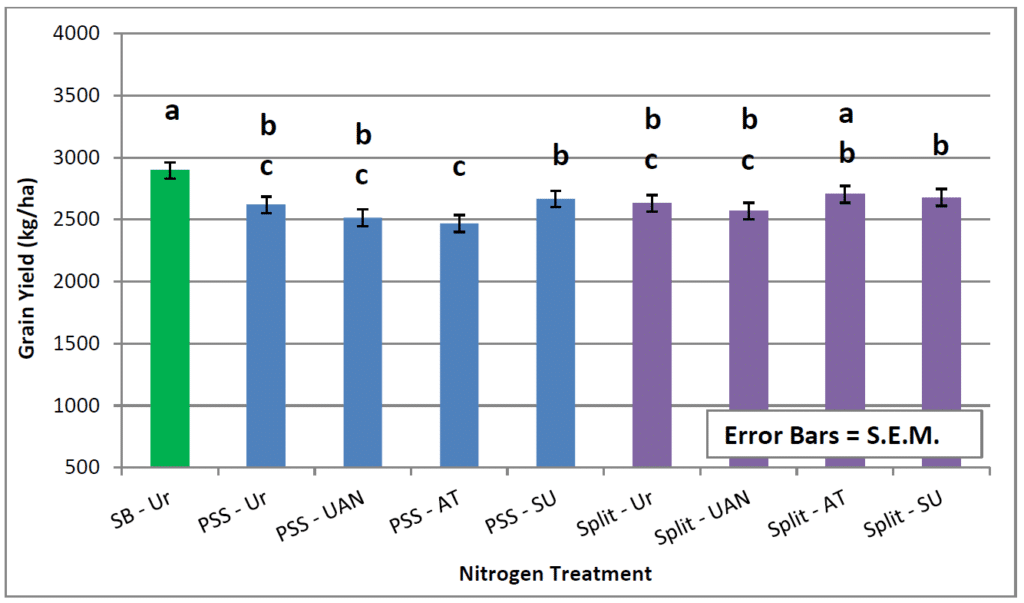
Nitrogen fertilizer source and timing trials

In addition to demonstrating canola response to nitrogen fertilizer rates with different sources, timing, and placement options relative to a side-banded, untreated urea benchmark during a dry year, the 2017-2018 Demonstrating 4R nitrogen management principles for canola project also took in-season NDVI and SPAD measurements. Both reasonably good indicators of the potential yield response to nitrogen, the SPAD measurements tended to be more sensitive to the nitrogen status of the plants, NDVI has the advantage of being easier to measure over large areas and is generally better suited for characterizing spatial variability in productivity.
Using a 0x, 0.5x, 1.0x, and 1.5x of a baseline rate of 145 kg nitrogen/ha (soil residual plus fertilizer) supplied as side-banded urea produced a strong response with a maximum yield increase of 133% over the control. Regarding timing/placement, all treatments had a strong nitrogen response and significant differences amongst treatments were rare. There was an overall advantage to both side-banding and fall in-soil banding over the fall surface broadcast applications.
Outcomes from trials with four sources (untreated urea, Agrotain, SuperUrea, and ESN) and three timing/placement options (fall surface-broadcast, fall in-soil band, and side-band) included:
- Fall surface-broadcast applications yielded 9% lower than with either fall in-soil or side-banded nitrogen.
- Yields with were similar for fall banded versus side-banded nitrogen.
- All sources performed similarly when averaged across timing/placement methods (suggesting that canola responded similarly to all sources under the conditions encountered).
- Fall, surface-broadcasting where canola yields with SuperUrea tended to be higher than untreated urea and Agrotain and did not significantly differ from most of the treatments where nitrogen fertilizer was banded beneath the soil surface.
- Nitrogen fertilizer management remains highly affected by environmental conditions, so results can vary.
- Soil testing helps account for the inherent fertility of the soil and better determine appropriate fertilizer rates.
- Side-banding continues to be recommended as a safe and effective practice that will provide consistent results over a broad range of environmental conditions. In this demonstration, fall in-soil banding was also highly effective and, although the benefits can vary with conditions, enhanced efficiency fertilizer products can improve performance, particularly with practices like fall-surface broadcasting.
Manitoba on-farm nitrogen rate trials
In 2022 the Manitoba Canola Growers launched a pilot on-farm research program to help farmers across the province fill the gap between traditional research results and the farm level. The program aimed to provide applied, transferable research results to farmers to allow for the adoption of new and improved production practices by evaluating performance across a wide arrange of growing regions and farm operations in Manitoba.

Three trial types including a seeding rate trial, a nitrogen rate trial and an anti-fungal bioinoculant trial were conducted. The nitrogen rate trial focused on identifying optimal nitrogen fertilizer rate based on return on investment and nitrogen use efficiency. It tested three rates: the farmer’s standard nitrogen rate (100%), a reduced rate (75%) and a high rate (125%).
Results reported that two of the site locations showed a significant yield increase due to a higher nitrogen rate application, but the other three trial sites showed no significant yield differences due to the reduced or higher nitrogen fertilizer rate as compared to the standard.
Complete 2022 canola on-farm research results from this and the seeding rate and the antifungal bioinoculant trials can be found on the Manitoba Canola Growers website.
Efforts to advance breeding for nitrogen use efficiency
The Soil health and nutrient uptake among diverse canola lines – added value to crop phenotyping study addressed a significant bottleneck limiting the advancement of crop breeding. By characterizing crop nutrient uptake and soil characteristics, a better understanding of how these factors influence crop productivity, especially as assessed in breeder trials, could be attained.
Field trials to test advanced imaging (e.g., drone-based multispectral), molecular (e.g., microbial metagenomics, synchrotron), and computational tools (e.g., machine learning) to link crop phenotype to genotype reported:

- Crop nitrogen use efficiency was related to soil inorganic nitrogen, and soil inorganic nitrogen was correlated to soil microbial community diversity and composition. There were certain genotypes with differences in soil inorganic nitrogen, but the cause of this is unclear so far.
- This suggests genotype can affect soil inorganic nitrogen, extractable sulphur, and total carbon, but likely won’t affect available phosphorus and pH. The genotype effect on soil nutrients may not be consistent.
- It also means that root traits and soil inorganic nitrogen are related to microbial diversity and community composition and crop nitrogen use efficiency.
- Soil inorganic nitrogen and extractable sulphur were most responsive to differences in B. napus genotype, while available phosphorus and soil pH were unaffected.
- Soil properties varied the most within the growing season and changes in nutrients were relatively consistent.
Phosphorus fertilizer considerations
A 2015 survey of soil testing lab results by the International Plant Nutrition Institute showed that 81% of Saskatchewan soil tests fell below the critical levels for phosphorus. Canola is known to be a large user of phosphorus but it is also generally accepted that high rates of seed-placed phosphorus fertilizer can reduce seedling survival and establishment in this crop. While phosphorus fertilization will typically result in higher canola seed yields when soil residual levels of this nutrient are low, often the response is most evident early when more vigorous growth is frequently observed with phosphorus fertilization.
Side-band phosphorus (and sulphur) if possible
The Enhancing canola production with improved phosphorus fertilizer management study at IHARF evaluated the impact of rate (0, 20, 40, 60, and 80 kg ha-1 of P2O5) and placement (seed-placed versus side-band) of fertilizer phosphate, either alone or in combination with fertilizer sulphur, on canola phosphorus-uptake and yield. Small plot trials were established at Indian Head, Melfort, and Scott, Saskatchewan over three years (2016-2018) to test a range of soil and climatic conditions.
Results of this research informed these recommendations:
- When seed-placed, higher phosphorus fertilizer rates tended to increase green seed percentage and average seed weight (TKW), though placement had much less impact than rate.
- While average seed weight TKWs remained in the expected 2.5 to 4 mg/seed range, they did increase with phosphorus rates at the high phosphorus rates.
- Overall, green seed was very low all three years (<3.5%) and side-banded phosphorus did not generally impact green seed, but it was sometimes affected by seed-placed phosphorus.
- This could be due to reduced plant density, which increase branching and less seeds development uniformity, which can cause variable maturity of the whole plant, and increased the green seed count.
- Side-banding all or most of the phosphorus fertilizer was the best management practices for growing canola in Saskatchewan, especially when higher rates are needed.
- No rate of seed-placed phosphorus was found to be safe, as damage occurred at very low rates, although damage maybe deemed acceptable at low rates and the degree of damage is likely to change across the landscape.
- Canola yields were optimized between rates of 70 and 80 kg ha-1 of side-banded phosphorus fertilizer, though there was no negative agronomic consequences to higher rates, suggesting it helps build or maintain soil phosphorus reserves.
- A yield increase was reported at side-banded sites with very low to moderate levels of soil available phosphorus and at site with high soil available phosphorus, as well as when rates were above soil test recommendations.
- Also avoid adding ammonium sulphate in the seed-row, if possible, as even adding a small amount of can have a negative additive effect to seed-placed: increasing damage to seeds and reduce canola emergence. If logistics allow, side-band all phosphorus and sulphur to maintain plant populations and yield potential.
These results suggest phosphorus fertilizer recommendations should be reconsidered for current high-yielding cultivars– which is now taking place through the Revising the crop nutrient uptake and removal guidelines for Western Canada project (see recorded presentation for more information).
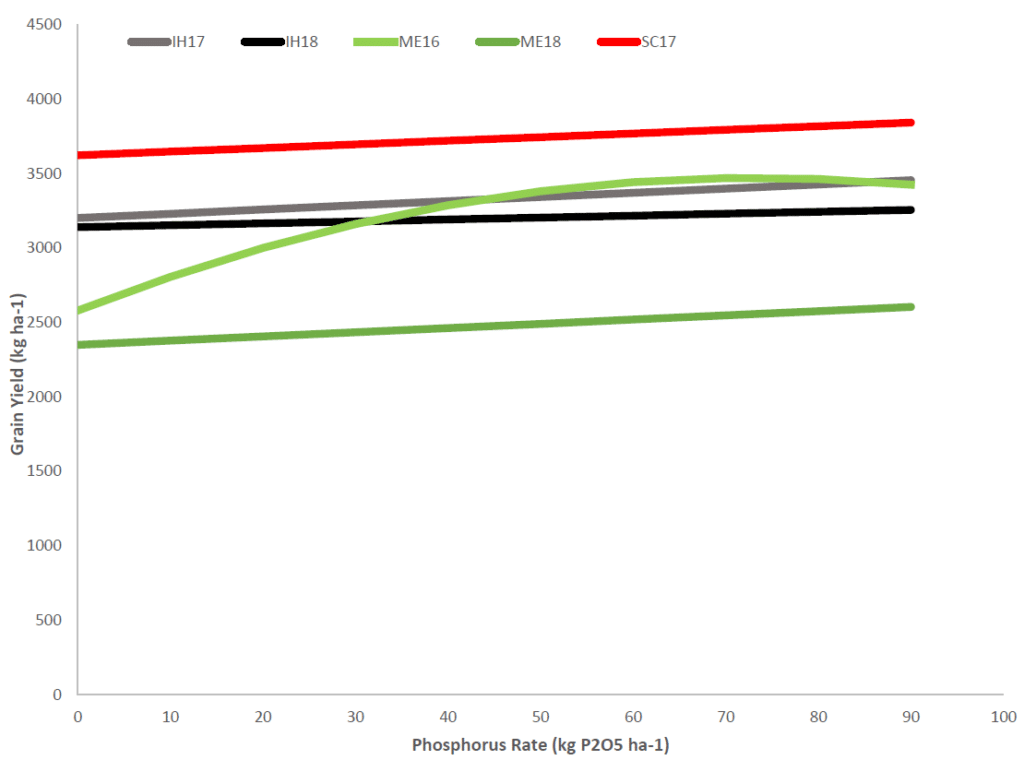
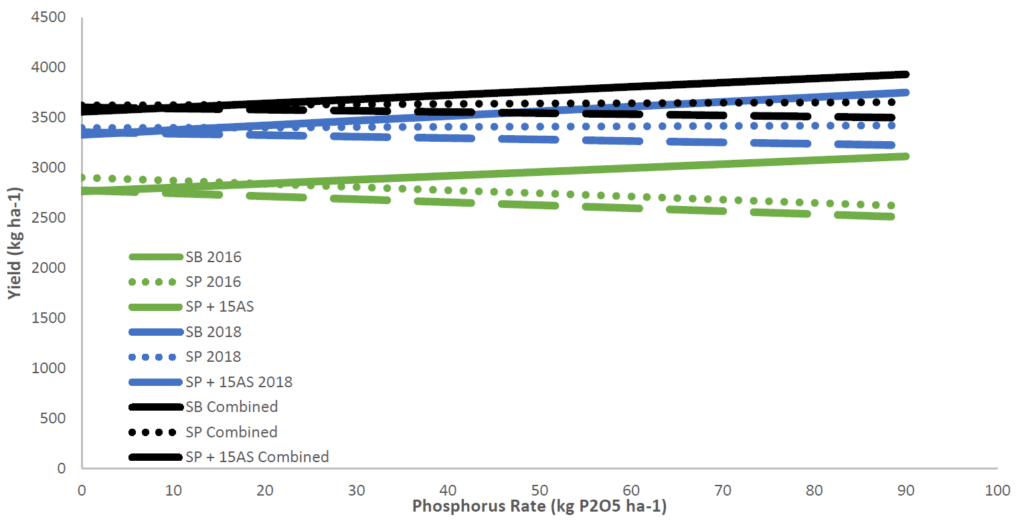
Maintain or build residual soil phosphorus levels
Building on previous research, IHARF’s 2017 Demonstrating 4R phosphorus principles in canola project demonstrated the response to contrasting rates (0, 25, or 50 kg P2O5/ha) and timing/placement options (pre-seed broadcast, seed-placed or side-banded) for monoammonium phosphate fertilizer (11-52-0) during another dry year on a low phosphorus site near Indian Head, Saskatchewan.
- Across rates, yields were 5% higher from side-banded monoammonium phosphate than broadcast phosphorus or the control, support the recommendation of banding as opposed to broadcasting.
- Early-season assessments of vegetative growth using NDVI also detected slight increases with side-banded relative to broadcast phosphorus and the control, though differences were no longer evident by late bolting.
- While low rates of phosphorus are often sufficient to mitigate yield loss within the year of application, rates should be based on long-term fertility objectives, such as maintaining or building residual soil phosphorus levels.
Choosing a suitable phosphorus source

Y Prices per unit of P2O5 are adjusted for both the nitrogen and sulphur (where applicable) provided by the phosphorus fertilizer products. The prices used for these adjustments were $1145/Mt for urea (46-0-0) and $750/Mt for ammonium sulfate (21-0-0-24)
X Based on average yields achieved over 10 location-years in Saskatchewan and canola price of $900/Mt which is reasonably representative of the period during which the fertilizer was priced.
W $/ha P2O5 costs subtracted from $/ha gross revenues. Values do not account for fixed costs or variable costs other than phosphorus fertilizer after adjusting for the value of nitrogen and sulphur
The Canola seed safety and yield response to novel phosphorus sources in Saskatchewan soils project examined the impact on canola yield and stand establishment in response to increasing rates of various seed-placed phosphorus fertilizer sources.
Field trials were carried out at Swift Current, Scott, Indian Head, and Yorkton in both 2020 and 2021 along with Melfort, Outlook, and Redvers in 2021 on sites low in residual phosphorus (<15 ppm most of the time). Fertilizer sources were monoammonium phosphate (MAP), MicroEssentials® S15, CrystalGreen® struvite (CG), and a MAP:CG blend with 35% P2O5 from CG. In addition to a control, the rates were 25, 45, and 65 kg P2O5/ha.
The research outcomes included:
- Stand establishment was impacted at about half of the sites (exemplifying the unpredictable nature of seedling injury with in-furrow phosphorus fertilizer placement). Stand reductions were often most severe with S15, followed closely by MAP. The MAP:CG blend had a less severe impact and no impact with 100% CG.
- Yields continued to increase up to the highest phosphorus rate, and the responses were similar for all sources (except CG, which was slightly poorer).
- Less than half of the sites reported a significant effect of phosphorus on yield, however, many sites had below average yields.
- As noted in other studies, phosphorus fertilization important in the long-term (as well as the year of application).
- All fertilizer sources performed well economically, except 100% GC due to its higher cost and weaker yield response. The rates to maintain (or build) phosphorus fertility over the long-term were also profitable.
- MAP was the only source that was always more profitable than the control, regardless of rate (and was more profitable than the control when averaged across rates). However some sources may be advantageous from a logistic/handling (i.e. S15) or a seed safety (i.e. MAP:CG blends) perspective.
Soil testing and analysis investigations
The Revisiting nitrogen fertilizer recommendations for Saskatchewan: Are we measuring the right soil nitrogen pool project focused on improving soil testing and soil analysis.
Soil testing is meant to measure how much nitrogen is in the soil that will supply the crop during the growing season. However, what is typically measured is the soil inorganic nitrogen (a product of mineralization), and then predictions are used to estimate how much additional nitrogen will be released depending on the soil zone. Although measuring mineralization during a growing season could determine actual nitrogen release, it is a matter of too little too late – so an estimate of potentially mineralizable nitrogen is required.
Fifty-five soil samples from across Saskatchewan were collected in fall 2018 and analyzed using the standard method and a new method. Based on the results, these key outcomes were generated:
- A new rapid (15 minute) microwave-assisted citrate extraction (MACE) method was developed that yielded soil protein concentrations comparable to those obtained using the standard ACE method.
- However, the MACE and ACE methods extract about 40–50% of the total organic nitrogen in soils but only 1–2% of total soil nitrogen was potentially mineralizable. Therefore, any useful measure of potentially biologically available nitrogen is obscured by the large size of the ACE/MACE soil protein pool. Therefor, it was concluded that the ACE/MACE measures of soil protein are not suitable as a short-term (seasonal) nitrogen availability index.
- Listen to the Canola Watch podcast: Episode 82 (December 14, 2022) – Soil tests and nutrient uptake for a more thorough explanation of this.
Related research and resources
Related research (completed and ongoing) on this topic:
- Choose the right placement for nitrogen and phosphorus fertilizer applications (Hub blog)
- Research behind suitable fertilizer source choices (Hub blog)
- Revising the crop nutrient uptake and removal guidelines for Western Canada
For more information on nutrient management topics, visit:
- The CCC’s 4R Nutrient stewardship practices section of the Canola Encyclopedia.
- Canola Watch fundamental fertility management articles
- The nutrient management playlist on the CCC’s YouTube channel
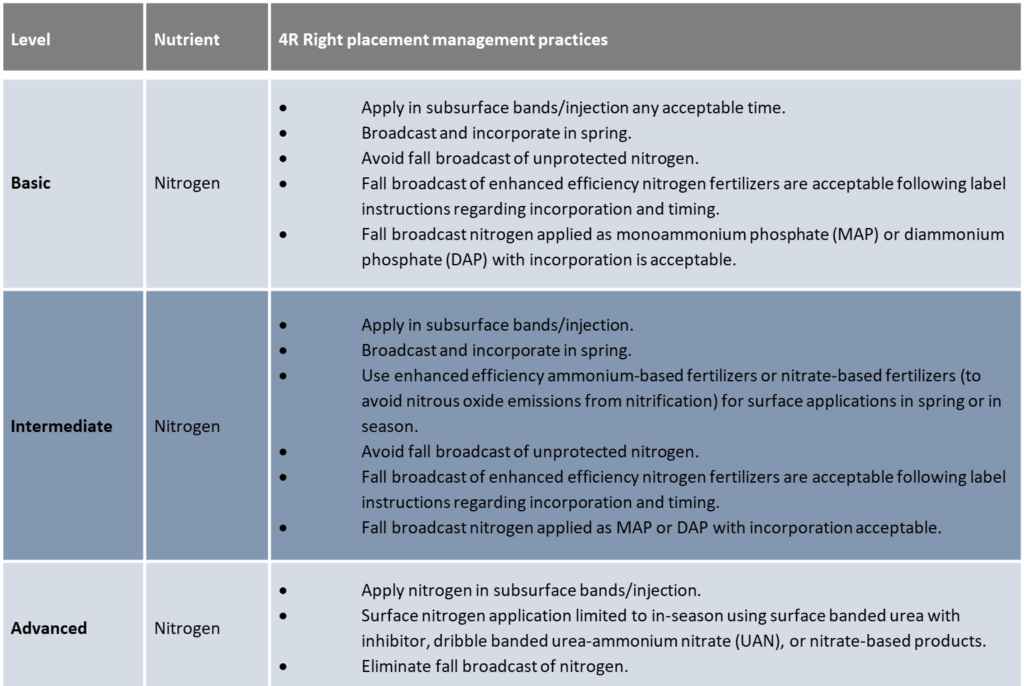
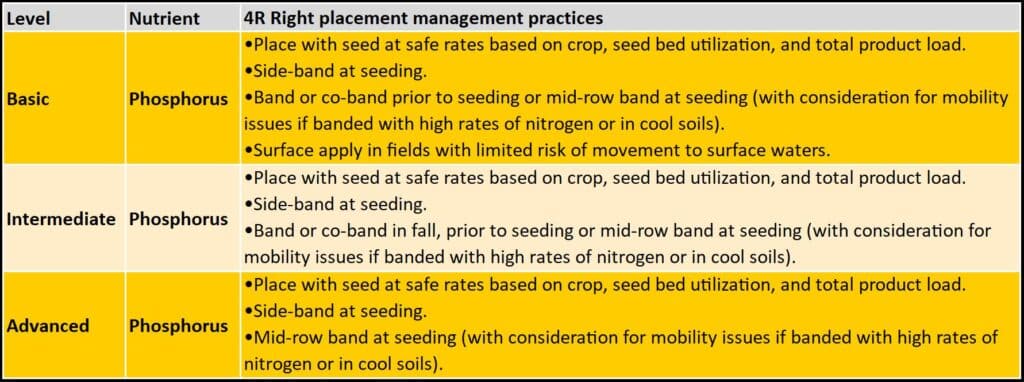
Published January 27, 2023


